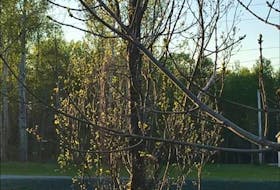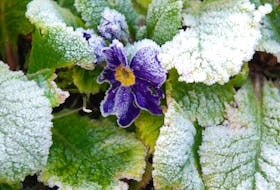Just when you thought the groundhog had dibs on weather folklore, along comes the woolly bear caterpillar. When it comes to long-term forecasting, one of the most talked about insects is the woolly caterpillar. Each year, as summer winds down, people start noticing them and paying close attention to their stripes.
Grandma was always anxious to spot a caterpillar slithering across the front step. She, like many others, believed that the wider the middle reddish-brown section, the milder the winter would be. It has become one of the most popular fall folklore around. A lot of pressure for a little caterpillar.
I wish I had a solid scientific explanation for this one, but the truth behind the woolly caterpillar’s band width actually has more to do with its age than a weather prediction. As it prepares for the winter, the caterpillar molts, becoming less black and more reddish-brown over time.
Last week I received two photos: one from Doris Townsend in Shelburne County, N.S., and another from Ruth Boudreau from Ross Ferry, Cape Breton, N.S. The caterpillars look very different and now you know why!
The lack of scientific proof doesn't stop the good people of Ohio from celebrating the caterpillar. The mythical qualities attributed to the caterpillar, commonly known as the “woolly bear” has led to an annual Woolly Bear Festival in Vermillion, Ohio, on Lake Erie. Every fall, people young and old - many dressed in woolly bear costumes - gather for a fun-filled day.
Why not? The groundhog has his day!
- Have a question about the weather? Email [email protected].
- Read more Grandma Says columns.
Cindy Day is the chief meteorologist for SaltWire Network.








